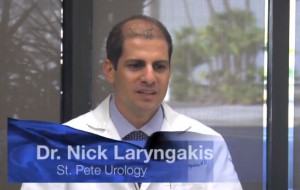 The failure to get or sustain the erection of the penis during a sexual act is called erectile dysfunction (ED). Normally, the penis gets erect after blood enters the penis hydraulically and gets retained in the squishy-like bodies of the penis. Erection is usually preceded by sexual arousal, a process involving the transmission of waves of signals from the brain to the penile nerves.
The failure to get or sustain the erection of the penis during a sexual act is called erectile dysfunction (ED). Normally, the penis gets erect after blood enters the penis hydraulically and gets retained in the squishy-like bodies of the penis. Erection is usually preceded by sexual arousal, a process involving the transmission of waves of signals from the brain to the penile nerves.
According to the renowned urologist and erectile dysfunction expert, Dr. Nicholas Laryngakis, the moment a man realizes the first instance of difficulty or failure to have an erection is most decisive. “The realization that a man has failed to get an erection bites the mind painfully and sets up a complex of psychological reactions which may worsen or completely lead to erectile dysfunction,” he says with the certainty of an expert.
The causes of erectile dysfunction include circulation problems like the changes in the voltage controlled potassium channels (as in arsenic poisoning due to contaminated water), organic causes such as circulatory diseases and diabetes, side effects of certain drugs, neurological problems (such as traumas from prostatectomy surgery) and hormonal insufficiencies (hypogonadism).
According to Dr. Laryngakis, psychological problems can also cause ED. “The other form of impotence that results from thoughts and feelings is usually less frequent and easily helped, but it can also grow into a more complex and difficult-to-treat problem,” he says with a show of wit.
Treatment for erectile dysfunction is available for over 90% of all cases. The condition can be managed by a number of medications and other therapeutic strategies. In fact, the battle against erectile dysfunction is slowly being won if the current successes are anything to go by. Apart from the treatment of ED cases by dealing with underlying causes, Dr. Laryngakis says that using PDE5 inhibitor drugs (such as Viagra) is an important first line therapy. Other forms of treatment include administering prostaglandin tablets into the urethra, penis pumps, penis implants, penile injections, penile prosthesis, and vascular reconstructive surgery.
